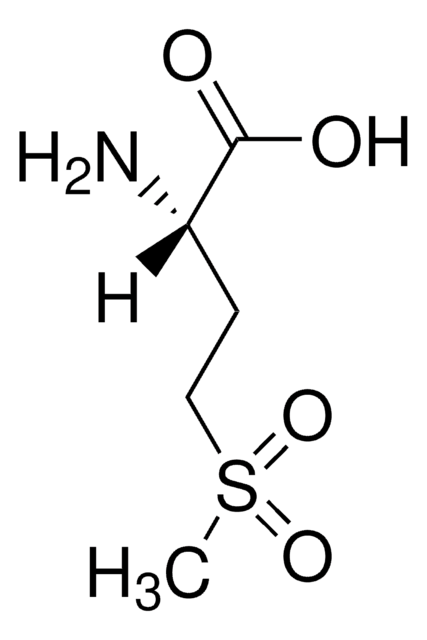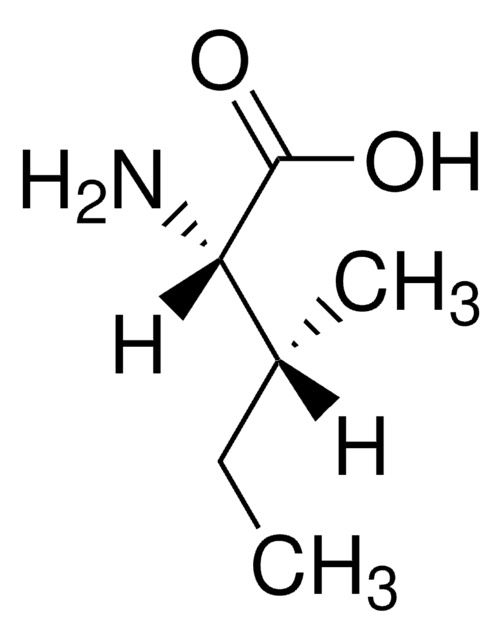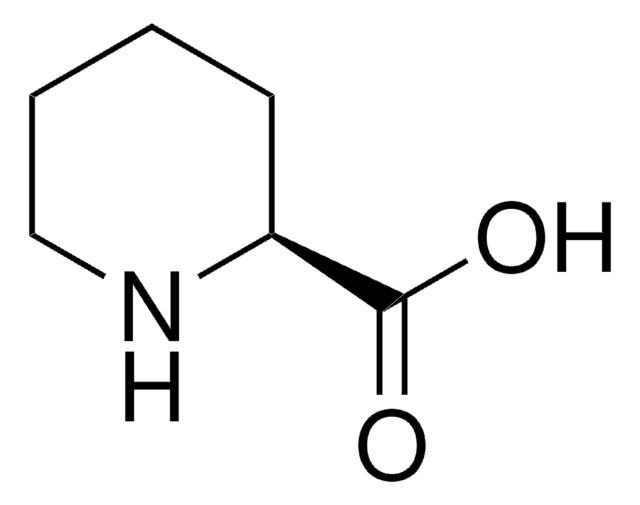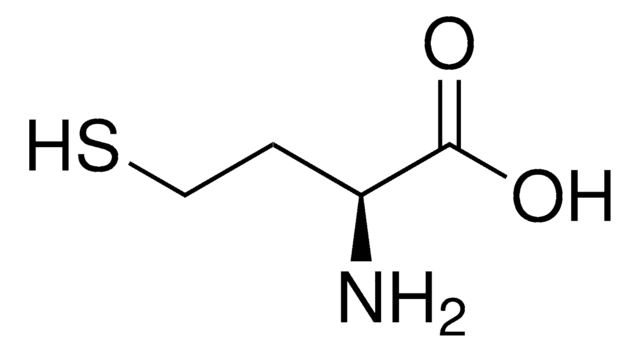95148
L-Argininosuccinic acid lithium salt
analytical standard
Sinonimo/i:
N-{{[(4S)-4-Amino-4-carboxybutyl]amino}iminomethyl}-L-aspartic acid lithium salt, Lithium L-argininosuccinate
About This Item
Prodotti consigliati
Grado
analytical standard
Saggio
≥90.0% (HPLC)
Forma fisica
solid
Attività ottica
[α]/D 15±2°, c = 1 in H2O
Durata
limited shelf life, expiry date on the label
Impurezze
≤20% water
applicazioni
clinical testing
Temperatura di conservazione
2-8°C
Stringa SMILE
OC(C[C@@H](C(O)=O)NC(NCCC[C@H](N)C(O)=O)=N)=O.[Li+]
InChI
1S/C10H18N4O6.Li/c11-5(8(17)18)2-1-3-13-10(12)14-6(9(19)20)4-7(15)16;/h5-6H,1-4,11H2,(H,15,16)(H,17,18)(H,19,20)(H3,12,13,14);/q;+1/t5-,6-;/m0./s1
MGJRREWOOITZBB-GEMLJDPKSA-N
Cerchi prodotti simili? Visita Guida al confronto tra prodotti
Categorie correlate
Azioni biochim/fisiol
Codice della classe di stoccaggio
11 - Combustible Solids
Classe di pericolosità dell'acqua (WGK)
WGK 3
Scegli una delle versioni più recenti:
Certificati d'analisi (COA)
Non trovi la versione di tuo interesse?
Se hai bisogno di una versione specifica, puoi cercare il certificato tramite il numero di lotto.
Possiedi già questo prodotto?
I documenti relativi ai prodotti acquistati recentemente sono disponibili nell’Archivio dei documenti.
Il team dei nostri ricercatori vanta grande esperienza in tutte le aree della ricerca quali Life Science, scienza dei materiali, sintesi chimica, cromatografia, discipline analitiche, ecc..
Contatta l'Assistenza Tecnica.







